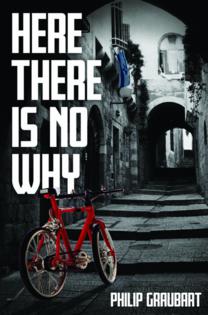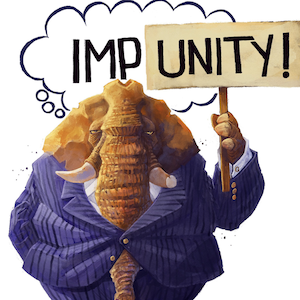Expert tapestry of Jewish history and gripping mystery
Published in Mom's Advice
In 2005, American journalist and single father Judah Loeb returns to Israel to investigate the decades-old death of an academic mentor and Holocaust survivor, only to discover that the past is indeed a foreign land in Philip Graubart’s entrancing "Here There Is No Why."
Ten years after the suicide of his wife, Mary, Judah is sent on assignment back to the land where he attended Hebrew University for one brief, brilliant year in 1982-83. His task: to author a provocative article on the 1983 death of renowned Jewish professor and theologian, Chaim Lerner, who fell to his death from his apartment balcony. Officially ruled suicide, Judah’s editor urges him to investigate rumors it was something more insidious.
Towing along his opinionated 15-year-old daughter, Hannah, Judah is soon flooded with memories his return unleashes. The most powerful of which are of his first love, the enigmatic Michal, an Israeli student who first introduces him to Chaim and his wife, Zehava, in that fateful year. In this timeline, Judah quickly comes under the spell of Chaim’s personal stories and deep theological ponderings on God and the Shoah, accepting a role as Chaim’s research assistant. But as he falls deeper in love with Michal — who has her own unique bond to the Lerners — he becomes privy to the troubling family dynamics that make for interesting dinner conversation:
“A lovely Shabbat dinner conceals landmines — political arguments, terrorist missiles, Auschwitz stories, Jewish history. A son serving somewhere in Lebanon. Fear. Exhaustion. Anger. And here, it seems, there is not always a why.”
Moving from 1982-83 to 2005, Judah reconnects with Michal and Charlie, his former university roommate and now Jerusalem homicide detective, and is surprised by Hannah’s quick ability to pick up the Hebrew language — something he never did — as well as her interest in helping him get to the heart of Chaim’s death. Graubart navigates the thorny issue of suicide from more than one angle and does so with powerful sensitivity.
Judah is all too aware of what 5-year-old Hannah suffered being the first to find Mary’s body — a shell of itself after fruitless rounds of chemotherapy — hanging in their home in 1995. With well-timed flashbacks to Mary’s cancer diagnosis and Judah’s reckoning with her death through alcohol and a six-month stint in rehab, Graubart creates memorable characters with depth and messy contradictions.
But the larger mystery of Chaim’s demise is the driving force. Elderly and infirm, Chaim may have accidentally fallen from his aerie, but most believe he succumbed to the disconcerting trend of Holocaust survivors-turned-writers who choose death, or what Judah calls becoming “Hitler’s final victim.” But Chaim had enemies, too, and Charlie wants to reopen the case, giving Judah introductions with Israel’s leading rabbinical lights who viewed Chaim’s writings on God as heretical.
The flashbacks to Judah and Chaim’s long conversations on the nature of God, the Holocaust, human suffering, and Israel’s wars are enlightening and heady, rich with witty and sharply honed dialogue. Readers are treated to more than just a cold case mystery… the novel brims with elemental human questions that often have no answer.
Graubart expertly juggles not one but three major timelines as Judah starts to reconcile his halcyon memories of Chaim with darker realities he uncovers in his investigation. At the same time, he, Michal and Hannah must finally confront the most painful truths about each of their pasts to find a way forward.
The inclusion of “excerpts” from Judah’s future article about Chaim, sporting the same title as Graubart’s novel, is an ingenious and creative device to reveal more details about Chaim through Judah’s interviews with those closest to him. Indeed, Judah’s troubled relationship with the past, especially his ambivalence to Judaism and Israel, makes for radiant writing:
“It occurred to me that Israel had in fact been a receptacle for the romantic obsessions of Jews for thousands of years. What was longing for Jerusalem, if not a thwarted romantic dream? Wasn’t the point of Zionism to finally fulfill our deepest, most mythic longings?”
With a wealth of porcelain prose, "Here There Is No Why" is a twisting and captivating story that captures a rarefied world of faith, philosophy, and troubling human complexity with both heart and humility. This is not one to miss.










Comments